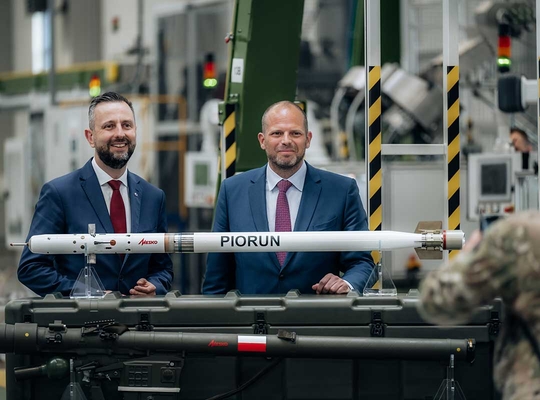You are here
Belgium and Poland aim for strong military cooperation

Belgium and Poland are stepping up their military cooperation. That’s the core message of the declaration of intent signed in Warsaw by Belgian Defence Minister Theo Francken. The focus lies on air defence and the joint development of military capabilities.
“Poland is making massive investments in defence, already spending over 4.6% of its GDP The gross domestic product (GDP) is the total monetary value of all goods and services produced within a country, both by companies and the government. This term is usually used as a benchmark for a country’s prosperity. This is why the N-VA closely follows the evolution of the Belgian GDP. GDP ,” said Francken. “By working together, we can act faster and boost our readiness. While many talk about European defence cooperation, we’re actually doing it.”
Air Defence Powered by Polish Technology
Belgium’s land forces will soon be equipped with portable air-defence missile systems that can quickly engage drones, helicopters and low-flying aircraft. These so-called PIORUN MANPADS will provide a fast, flexible response. “We’re purchasing missiles, launchers and simulators for around 140 million euros,” Francken explained. These systems are fully developed and manufactured by the Polish defence industry—entirely on European soil.
Belgium and Poland will also exchange information and organise joint training sessions to ensure effective use of the weapon systems.
Closer Cooperation in the Air
The Belgian and Polish air forces are also deepening their ties. Polish pilots will gain access to Belgium’s F-35 simulators, and joint training programmes are being developed. In return, Poland will lend Belgium a stock of medium-range AMRAAM missiles to ensure uninterrupted operational planning for its F-35 fleet. Due to the war in Ukraine, delivery times for such missiles have been significantly delayed.
A Step Towards Greater Standardisation
The close collaboration between the two countries will soon be formalised in an updated Memorandum of Understanding. For Minister Francken, the message is clear: “It’s crucial to harmonise capabilities and standardise equipment within Europe. NATO remains a key pillar in that effort.”

